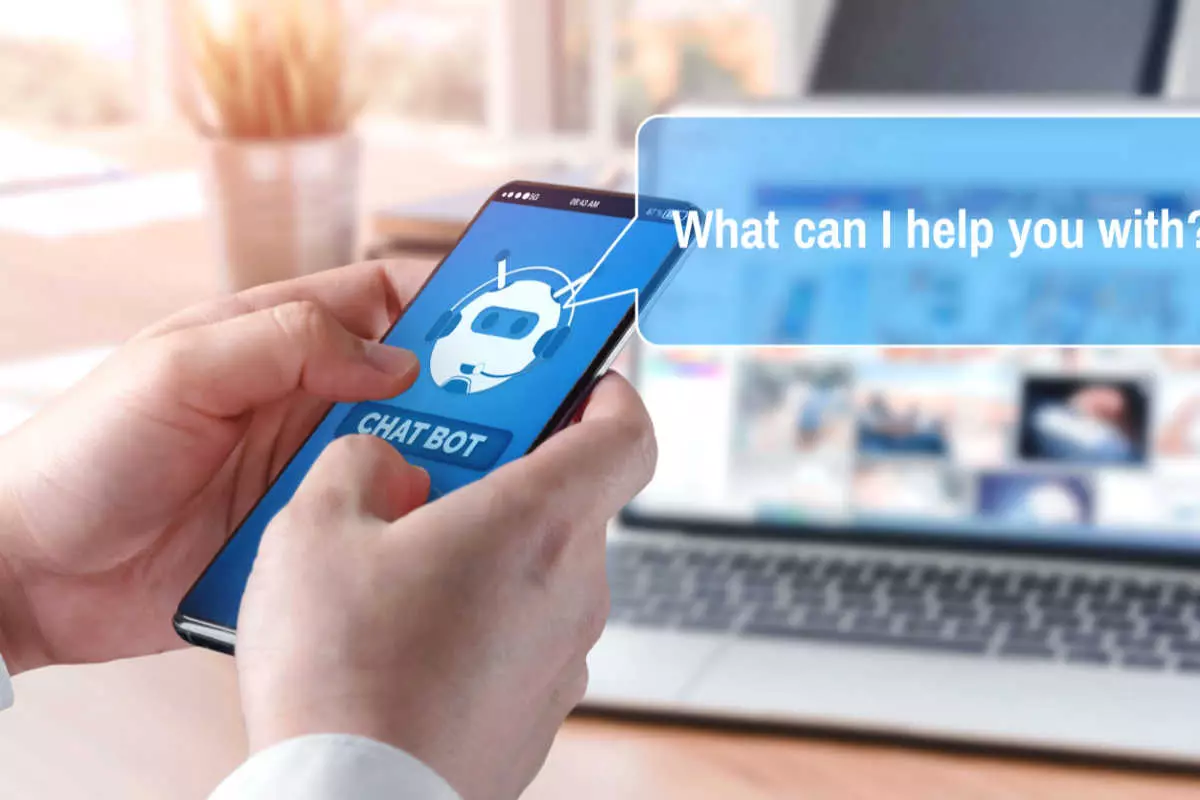Table of Contents
- Overview of Types of Customer Service
- 9 Important Types of Customer Service
- 1. Traditional Walk-in Customer Support
- 2. On-Site Customer Support
- 3. Customer Support via Phone
- 4. Customer Support via Email
- 5. Live Chats Customer Support
- 6. Interactive Voice Support
- 7. Self-Service Content
- 8. Social Media Support
- 9. Customer Support via Chatbots
- How to Choose the Best Customer Service Model for Your Business
- Why Omnichannel Customer Service is Beneficial
- Final Thoughts
In the competitive world of business, 65% of customers switch brands after just one poor service experience. This sobering statistic reinforces the fine line between retention and customer loss.
However, delivering first-class customer service isn’t a one-size-fits-all approach – it involves understanding and deploying an omnichannel approach that includes reactive and proactive strategies.
But how do you decipher which channels best cater to your business’s needs and customer base?
With this guide, you’ll understand the various customer service types and learn how to implement them effectively to retain customers and gain a competitive edge.
Overview of Types of Customer Service
When it comes to customer service, there are two main types of approaches you can implement to improve your service – reactive and proactive customer service.
- Reactive Customer Service is about responding to customer inquiries and concerns as they arise. It is a cost-effective option for businesses with limited resources, as they can prioritize responses based on urgency. However, relying solely on reactive customer service can lead to more transactional relationships with your customers. They may feel like they’re only reaching out to you when something goes wrong, which can lead to negative perceptions of your business. This is why it should go hand in hand with proactive customer service.
- Proactive Customer Service, on the other hand, involves anticipating customer needs and addressing them before they become an issue. This approach can help anticipate customer needs, increasing customer satisfaction and loyalty. However, implementing proactive customer service can be resource-intensive, requiring significant time and money to train staff and develop systems to support this approach.
Gartner reports that 54% of customer support leaders say expanding to proactive service is a key activity to focus on in the current business environment. Combining reactive and proactive customer service can help businesses identify and address common customer issues, reducing the number of support tickets and improving operational efficiency.
9 Important Types of Customer Service
Providing exceptional customer service helps maintain a loyal customer base and drive growth. But with so many types of customer service channels available, it can be challenging to know which one to prioritize.
In this section, we discuss nine important types of customer support, including their benefits and how to implement them, to help you determine the best approach for your business.
1. Traditional Walk-in Customer Support
In specific industries, the traditional walk-in customer support model remains necessary, offering a level of rapport-building and real-time service that digital methods struggle to replicate. In fact, 94% of customers prefer to use walk-in service channels when seeking assistance.

Walk-in customer support benefits industries that sell complex, specialized, or high-value products and services. These industries include retail, automotive, financial institutions, real estate agencies, fitness centers, etc.
Such sectors benefit from providing customers an opportunity to ask questions, seek advice, and resolve issues in person, leading to better customer satisfaction, higher sales, and stronger brand loyalty.
For instance, customers investing in premium electronics, such as audio systems or home theaters, often require personalized assistance to understand the technical aspects, setup processes, and maintenance requirements. An expert available for walk-in consultations can provide this tailored support.
Walk-in customer support offers several advantages:
| Personalized Service | In-person customer support provides a high level of personalization, as representatives can directly assess and respond to a customer’s needs and emotions. |
| Human Connection | Customers can interact with a real person, which often leads to a more empathetic and satisfying customer service experience. |
| Demonstrations | For certain products or services, face-to-face interaction allows for live demonstrations or walk-throughs that can be more effective than remote or digital explanations. |
| Enhanced Customer Relationships | In-person interaction allows businesses to build stronger, more personal relationships with their customers, which can increase loyalty and lifetime customer value. |
| Real-Time Feedback | Businesses can gain immediate, direct customer feedback, providing valuable insights to improve products, services, and customer experience. |
| Upselling and Cross-Selling | In-person interactions offer opportunities to introduce customers to additional products or services, potentially increasing sales. |
| Training Opportunities | Direct customer interactions can provide real-world training scenarios for staff, helping them develop and improve their customer service skills. |
2. On-Site Customer Support
On-site customer support goes one step further than traditional walk-in customer service. It involves sending representatives directly to the customer’s location to resolve issues or provide guidance. This support can be particularly beneficial in the tech, healthcare, manufacturing, and real estate sectors.
For instance, the tech industry often deals with complex products or systems, like servers or network infrastructures. If these malfunction, it could disrupt a client’s business operations. Here, on-site support can provide timely, effective solutions and prevent prolonged downtime.
Distinct from walk-in customer support, on-site customer service brings the solution to the customer. It’s about proactively meeting the customer in their own environment and resolving their problems in real-time. This not only removes the burden from the customer but also provides businesses with a first-hand view of the issues in the context they occur, leading to more effective solutions.
Here are some benefits of on-site customer support:
| Convenience | Customers can receive support without leaving their premises, which can be particularly valuable for businesses or individuals with heavy equipment or complex setups. In fact, 68% say they’re willing to pay more for better support and service. |
| Immediate Resolution: | On-site support often enables immediate problem-solving, particularly for issues that require physical intervention or hands-on troubleshooting. |
| In-Depth Understanding | On-site visits can give the support team a deeper understanding of how customers use the product or service in their own environment, leading to better, more relevant advice. |
| Problem Prevention | On-site support can identify and resolve potential issues before they escalate, reducing future support needs and improving the product’s reliability. |
3. Customer Support via Phone
Phone customer service remains the top preference channel, with 76% of consumers preferring to call a representative for assistance. Businesses with products or services that require immediate attention, complex inquiries, and personalization often find phone support most beneficial. This includes industries like airlines, healthcare, delivery services, and high-end retail.

In high-end retail, customers may seek immediate assistance with product availability or shipping details, appreciating the instant resolution and personalized touch that phone support offers.
If you’re looking to invest in or scale your phone customer service, here are some considerations:
- Staff Training: Your staff is the frontline of your phone support, so invest in technical, communication, and problem-solving training. Periodic training refreshers can help them stay updated on changes and maintain top-notch service.
- Technology Infrastructure: You need a reliable phone system to handle high call volumes without compromising call quality. Advanced features like call routing, queuing, and recording can enhance your phone support’s efficiency and effectiveness.
- Availability: Consider the hours when your phone support will be available. Depending on your customer base, you might need to offer 24/7 support or support in different time zones.
- Response Time Standards: Set clear standards for how quickly calls should be answered. Customers value prompt responses, and long wait times can lead to dissatisfaction.
- Call Scripting: While each customer interaction is unique, having a general script can ensure consistency in service and help new staff members handle calls more confidently.
- Feedback Mechanism: Regularly gathering customer feedback can help you understand how well your phone support works and identify improvements.
- Contingency Plan: Unforeseen circumstances like a high call influx or system downtimes can affect service quality. A plan to handle such situations will ensure your customer support remains unaffected.
Some of the benefits of offering phone support include:
| Personalized Customer Interactions | Phone customer support allows for real-time interactions with customers. It provides an opportunity to build customer rapport and create a positive company image. |
| Immediate Feedback | Phone customer support provides businesses with direct feedback from customers. This feedback can identify problems, improve products and services, and adjust business strategies. |
| Improved Reputation | High-quality phone customer service can increase the business’s reputation. Positive experiences with customer support can lead to positive word-of-mouth recommendations and increased customer loyalty. |
| Up-Selling and Cross-Selling Opportunities | Phone support offers the opportunity to introduce customers to additional products or services that may meet their needs, leveraging the personal connection to drive sales in a considerate and helpful way. |
4. Customer Support via Email
Email support also remains the most popular customer support channel, with 98% of consumers preferring this method of assistance. In industries where interactions often require a more in-depth explanation, like IT services, fintech, or e-commerce, email support shines due to its ability to provide comprehensive and detailed responses.
For example, an IT services company can leverage email support to provide technical instructions or send screenshots, which can significantly improve the clarity of communication and customer satisfaction.
If you’re looking to set up or update your email support channel, consider the following:
- Set Clear Goals: Before implementing email support, determine your objectives. This might include improving customer satisfaction, reducing response times, or lowering the cost per contact.
- Choose the Right Platform: Pick an email customer service platform that can grow with your business. Features to consider include automation capabilities, categorization, analytics, and integration with your other systems.
- Leverage Automation: Implement automated responses for frequently asked questions or initial contact messages. This enhances efficiency and assures customers that their queries have been received and will be addressed promptly.
- Create a Knowledge Base: Develop a comprehensive database of frequent customer issues and solutions. This will help your team resolve queries faster and can be made accessible to customers for self-service.
- Train Your Team: Regularly train your team to ensure they can effectively handle customer inquiries. This training should cover product knowledge, communication skills, and the operation of your customer service platform.
- Define KPIs: Establish Key Performance Indicators (KPIs) to measure the effectiveness of your email support. Examples might include response time, resolution time, customer satisfaction score (CSAT), and first contact resolution rate.
- Personalize: Despite utilizing automation, ensure email responses remain personalized. Customers value the feeling of a unique, tailored service rather than being just another ticket number.
- Create Escalation Path: Create clear escalation procedures. Not every issue can be resolved at the first level, and understanding when and how to escalate can significantly improve customer satisfaction.
- Design Feedback Loop: Collect customer feedback about your email support regularly. This could be accomplished through surveys at the end of each resolution. Use this feedback to improve both your human and automated responses.
Pros of email customer support:
| Convenience | Customers can send an email at any time that suits them without waiting on hold or traveling to a physical location. |
| Documentation | Emails can include help-center articles, troubleshooting instructions, and other documents that customers can refer to for information or instructions. This can improve quality assurance, training, and dispute resolution. |
| Efficiency | Support agents can handle multiple email inquiries simultaneously, making email a highly scalable support channel. Additionally, automated responses to common questions can reduce the workload of customer service staff, save costs, and improve response and resolution times. |
| Cost-Effective | Email can be more cost-effective, requiring fewer resources to manage a large volume of queries. |
| Data Analysis | Email interactions can be easily analyzed to gain insights into customer needs, satisfaction levels, and support performance. |
5. Live Chats Customer Support
Live chat customer support gives customers the best of both worlds: digital support and a human touch. Online chat support is particularly well-suited for businesses with a robust online presence or those that cater to a tech-savvy demographic. It can be a good fit for e-commerce, online gaming, and SaaS industries, where customers expect quick, on-the-go responses.

For instance, an e-commerce business can utilize chat support for real-time assistance during the shopping process, significantly reducing cart abandonment rates. In fact, 81% of consumers use live support to seek help and communicate with the company.
Here are some key steps and considerations for integrating or scaling your live support channels:
- Determine Suitability: Evaluate if chat support aligns with your customer needs and business model. If your clientele are internet-savvy and value swift responses, it might be an excellent choice.
- Choose the Right Software: Pick a chat software that offers necessary features like automated responses, file sharing, and easy integration with your website and customer relationship management (CRM) software.
- Train Staff: Assemble and train a dedicated chat support team. They should be adept at multitasking, typing speed, and delivering precise responses quickly.
- Automate: Leverage automated responses and AI chatbots for handling common queries and initial greetings, ensuring instant customer engagement.
- Define Operational Hours: If 24/7 support isn’t feasible, clearly communicate the operational hours of your chat support to set customer expectations.
- Set KPIs: Establish KPIs such as response time, resolution rate, and CSAT.
- Seek Feedback: Regularly gather customer feedback on their chat experience to identify areas of improvement. This can be done by integrating a brief, optional survey at the end of each chat session, asking customers to rate service quality and provide suggestions for improvement.
The benefits of live chat customer service are as follows:
| Instant Assistance | Live chat provides real-time support, allowing customers to get their queries addressed promptly. |
| Ease of Use | Live chat can be easily accessed directly from a company’s website, providing a seamless support experience. |
| Cost-Effective | Live chat allows support agents to handle multiple conversations simultaneously, increasing efficiency and reducing the cost per contact compared to phone support. |
| Increased Sales | Immediate assistance via live chat can help guide customers through the purchasing process, reducing cart abandonment and boosting sales. |
| Customer Satisfaction | Due to its speed and convenience, live chat often leads to higher customer satisfaction scores compared to other support channels. |
| Visitor Tracking | Live chat platforms often provide real-time visitor tracking, offering insights into customer behavior and needs. |
| Proactive Support | Businesses can initiate chat sessions based on customer behavior on the site, potentially addressing issues before they become problems. |
6. Interactive Voice Support
Interactive Voice Response (IVR) is an automated telephone system that interacts with callers, gathers information, and routes calls to the appropriate recipients. It’s an invaluable tool for businesses that receive high call volumes or need to provide phone-based self-service options.
For instance, companies in banking, healthcare, and utilities can greatly benefit from IVR. Consider a bank that handles hundreds of calls daily for balance inquiries – a simple IVR system can automate this, freeing up staff for more complex queries.
However, for more complex inquiries, it may not be the best option – 56% of consumers voiced their frustrations with IVR systems that make it difficult to reach a human agent. Therefore consider the following when implementing or scaling an IVR system:
- System Selection: Look for an IVR provider that offers flexibility, scalability, and customization. Check for features like speech recognition, text-to-speech, and multilingual support. Consider how well the system integrates with your existing CRM or customer support software.
- Menu Design: Craft an efficient, customer-friendly IVR menu. Limit the number of options per level, ideally not exceeding five. Use simple, jargon-free language. If the IVR menu is too complex, it may deter customers from using it.
- Professional Voiceovers and Localization: Hire professional voice artists for your IVR prompts. If you serve a global audience, consider localization of prompts in different languages. The tone and clarity of voice prompts significantly impact the user experience.
- Routing Logic: Define clear routing logic based on caller input or customer data from your CRM. For example, high-value customers could be routed directly to a top-tier support agent.
- Fallback Option: Always include an option to speak with a human agent. This assures customers they can receive personal assistance when needed.
IVR offers the following benefits to businesses and their customers:
| Quick Resolution | IVR systems can instantly provide customers with information like account balances, store hours, or order statuses, eliminating the need to wait for a live representative. 90% of customers rate an immediate response as important when they have a question – 60% define “immediate” as 10 minutes or less. |
| Self-Service Option | Some customers prefer resolving issues themselves. IVR systems offer a self-service option, allowing customers to troubleshoot problems or access information independently. |
| Cost-Efficiency | IVR systems can handle a high volume of calls simultaneously, reducing the need for live agents and saving on labor costs. |
| Customer Segmentation | IVR systems can route calls based on the customer’s needs or value to the business, ensuring that high-priority customers or complex issues are quickly directed to the most appropriate agent or department. |
| Consistency | IVR systems deliver consistent information, eliminating the risk of human error or variability in responses that can occur with live agents. |
7. Self-Service Content
Did you know that 69% of customers try to resolve their issues or seek answers on their own? But less than one-third of companies offer self-service solutions.
Self-service customer support equips customers with the tools and resources to resolve their issues independently. As a result, businesses across various sectors, such as technology, e-commerce, telecommunications, and software services, are increasingly adopting this approach.

For example, a SaaS company might create an extensive knowledge base filled with step-by-step guides and video tutorials, enabling users to troubleshoot common problems without contacting support.
When implementing or expanding your self-service support, consider the following advice:
- Knowledge Base: Develop a comprehensive knowledge base with articles, how-to guides, FAQs, and video tutorials that tackle common customer issues.
- Interactive Guides: Utilize interactive guides or walkthroughs that lead customers through more complex processes or problem-solving steps.
- Community Forums: Create a space where customers can engage with each other, ask questions, share solutions, and even provide product feedback.
- IVR Systems: Implement an IVR system for phone-based support, providing automated responses to common inquiries.
- Self-Service Portals: Provide a personalized self-service portal where customers can view their order status, payment history, and personalized recommendations.
- Video Content: Create video content illustrating how to use your products or services, which can be especially helpful for complex or visual-based issues.
- Mobile Apps: Develop mobile applications with built-in support features like knowledge base access, chatbots, and direct messaging.
Here are the advantages of self-service content:
| Availability | Self-service content is available 24/7, allowing customers to find answers at their convenience without waiting for a response from customer support. |
| Speed | Customers can often resolve their issues more quickly using self-service content, especially for common questions or problems. |
| Empowerment | Self-service content enables customers to solve their problems independently, providing a sense of achievement and control over their experience. |
| Comprehensive Information | Self-service resources often provide detailed explanations and step-by-step instructions that customers can follow at their own pace. |
| Cost Efficiency | Self-service content reduces the number of simple, repetitive queries directed to your customer service team, saving time and resources. |
8. Social Media Support
With social media growing, businesses increasingly turn to these platforms to improve brand positioning strategies strategies and interact with customers more efficiently.
95% of consumers between 18 and 34 follow a brand on social media. Considering a large portion of a company’s demographic is on social media, businesses across various sectors – especially retail, hospitality, entertainment, and technology – are increasingly leveraging this customer service approach.
For instance, a hotel chain might respond to a customer’s tweet about their booking, providing swift resolution and publicly showcasing their commitment to customer satisfaction.
Here are some considerations:
- Platform Analysis: Identify the social media platforms your customers use most frequently, from Facebook and Twitter to LinkedIn, Instagram, or even TikTok.
- Dedicated Support Team: Assemble a specialized team to monitor and address customer inquiries on social media platforms, ensuring quick response times.
- Define Escalation Procedures: Establish clear procedures for escalating complex issues that require more personalized or private handling away from the public eye.
- Use of Social Listening Tools: Leverage tools that monitor and analyze brand mentions and sentiment across social media, helping you quickly address customer issues and understand their perception of your brand.
- Robust Training Program: Provide thorough training to your team on social media tools, response etiquette, crisis management, and handling diverse customer personas.
- Integrate with Your CRM: Integrate your social media support with your CRM system for seamless tracking of customer interactions and ensuring a unified, omnichannel support experience.
- Automate: Consider utilizing chatbots for handling basic inquiries, allowing your human support staff to focus on more complex issues.
The advantages of social media support include the following:
| Convenience | Many customers already use social media daily, making it a convenient channel for seeking support. |
| Improves Brand Image | Prompt and effective social media customer support can improve a company’s reputation and demonstrate its commitment to customer service. |
| Multifunctionality | Customers can use social media for support, as well as for staying informed about the company’s products, services, and updates. |
| Cost-Efficient | Depending on the scale, social media can be a cost-efficient customer support channel, as businesses can handle multiple inquiries simultaneously and use automation tools. |
| Increased Engagement | By interacting with customers on social media, companies can foster stronger relationships and engagement, increasing customer loyalty and retention. |
9. Customer Support via Chatbots
Research shows that chatbots can save companies more than 2.5 billion labor hours and cut mundane and repetitive tasks. Additionally, chatbots can cut customer service costs by about 30%.

Businesses in e-commerce, banking, healthcare, and hospitality have adopted this technology to enhance customer service efficiency. For instance, a healthcare provider might use a chatbot to answer routine queries about appointments and clinic hours, freeing up human resources for more complex tasks.
Here are some steps to implement or scale your chatbot customer service:
- Define the Purpose and Scope: Understand and outline the chatbot’s specific roles and tasks, such as answering FAQs or guiding customers through the purchasing process.
- Platform Decision: Evaluate where your chatbot will provide the most value – your website or a mobile app.
- Chatbot Creation and Integration: Choose between building a custom chatbot solution in-house, hiring a chatbot development service, or utilizing a pre-made chatbot platform. Ensure its seamless integration with your existing customer service software and CRM.
- Design a Seamless Handover Mechanism: Make sure your chatbot can smoothly transition a conversation to a human agent when the issue exceeds its capabilities.
- Training and Continuous Learning: Train your chatbot using previous customer interactions and continuously update its knowledge base to improve accuracy and relevance.
- Transparency and Ethical Considerations: Ensure customers are aware when they’re conversing with a bot. Your chatbot should be designed to respect user privacy and comply with all relevant data security regulations.
- Adapt and Expand Use Cases Over Time: As your chatbot improves and learns from more interactions, consider expanding its scope to handle more complex tasks or cover additional customer touchpoints.
- Offer Multilingual Support: If you operate in multiple regions, ensure your chatbot can communicate in the languages your customers speak.
The advantages of chatbots include the following:
| 24/7 Availability | Chatbots are available round-the-clock, supporting customers whenever they need it. |
| Instant Response | Chatbots can respond immediately to customer queries, reducing wait times. |
| Consistency | Chatbots deliver consistent service and information, eliminating the risk of human error. |
| Self-Service | Chatbots empower customers to find solutions independently, offering a sense of immediacy and control. |
| Cost Savings | Chatbots can handle a high volume of queries, reducing the need for a large customer service team and lowering costs. |
| Efficiency | By handling routine queries, chatbots free up human agents to focus on more complex customer issues. |
| Scalability | Chatbots can easily scale to handle increased customer inquiries during peak times without compromising service quality. |
| Data Collection | Chatbots can gather valuable customer data, giving businesses insights into customer behavior and needs. |
| Integration | Many chatbots can be integrated with other business systems (like CRM software), allowing for a more coordinated and informed customer service approach. |
How to Choose the Best Customer Service Model for Your Business
Choosing the right customer service strategy is a step in propelling your business to the next level of growth.

Here’s a more detailed exploration of the factors to consider when choosing the best customer service type for your business :
- Customer Personas: To develop customer personas, research your existing customer base. Analyze demographic information, customer behavior data, and feedback. You might find that certain personas prefer modern communication channels like chatbots or social media, while others still lean towards traditional methods such as phone or email support. Segmenting your audience into distinct personas can help tailor your customer service strategy to meet the expectations of each group.
- Company Size and Team Capacity: Your team’s size and capacity significantly influence the customer support you can provide. Small teams might lean more towards automated solutions like chatbots or IVR. In contrast, larger departments may be able to handle real-time, personal interactions through live chat, phone, or email support.
- Budget Considerations: Implementing automated solutions like chatbots or self-service portals can have higher initial costs but can result in substantial long-term savings by reducing the need for human resources. Meanwhile, traditional support options like phone or walk-in support may have lower startup costs but may require a larger, ongoing investment in personnel.
- Industry Specifics: Each industry has unique needs and standards for customer service. For example, the healthcare industry often requires personal and empathetic interaction, making phone and on-site support vital. In contrast, the tech industry, where customers often look for quick fixes to specific problems, may lean more towards self-service options and live chat. Customers’ expectations for support are partly shaped by industry norms, and understanding these can help tailor your support strategy to meet these expectations.
- Level of Complexity in Customer Queries
The complexity of common customer queries should also guide the choice of support channels. More complex inquiries often require personalized human interaction, such as phone or live support. In contrast, simpler, more straightforward issues can often be resolved with automated solutions like IVR or self-service portals. - Proactive and Reactive Support
Implement a mix of proactive (e.g., self-service knowledge base, FAQs, chatbots) and reactive (e.g., phone, email, social media) support to anticipate common customer issues and respond effectively when they arise.
For instance, a mid-sized software company catering to young entrepreneurs could implement a combination of proactive self-service support through an FAQ section and tutorial videos coupled with reactive support using live chat and email for more complex inquiries.
Why Omnichannel Customer Service is Beneficial
In today’s competitive marketplace, providing omnichannel customer service has become a non-negotiable standard for businesses looking to thrive. This is evidenced by the fact that 75% of customers expect a consistent customer support experience, regardless of how they engage a company.
The benefits of implementing such a strategy are manifold, including:
- Consistent Customer Experience: Omnichannel customer service ensures a uniform experience across all platforms. Whether your customer prefers calling in, sending an email, using a chatbot, or browsing your self-service options, the quality and style of service should be consistent.
- Improved Customer Satisfaction: A smooth and integrated customer service experience can significantly enhance customer satisfaction. For example, an issue raised on social media could be smoothly transitioned to a phone call without the customer needing to reiterate the problem, thus saving their time and reducing frustration.
- Enhanced Data Collection: The omnichannel approach allows for more comprehensive data collection from various touchpoints. This data can be utilized to further personalize and enhance customer interactions, ultimately leading to more targeted marketing and improved customer retention.
- Increased Operational Efficiency: With proper integration, data from various channels can be centrally managed, reducing duplication of work and improving team efficiency.
To effectively implement an omnichannel customer service strategy, consider the following:
- Understand Your Customers’ Preferences and Behavior: Conduct thorough market research, customer surveys, and user behavior analyses to understand which channels your customers prefer and how they use these channels for communication. Be sure to factor in demographic, behavioral, and transactional data for a more nuanced understanding.
- Map the Customer Journey: Identify all potential touchpoints a customer might have with your business. This includes awareness, consideration, purchase, use, and advocacy stages. Mapping the journey will help identify gaps, points of friction, and opportunities for improvement.
- Select and Implement the Right Technology: The backbone of your omnichannel strategy will be the technology and systems you employ. Consider investing in robust CRM systems, sophisticated chatbots, and social media management tools to streamline communication and improve service delivery. Ensure these systems can integrate seamlessly for a fluid customer experience.
- Consistent Branding and Messaging: To provide a truly cohesive experience, ensure your branding, messaging, and level of service are consistent across all channels. Develop guidelines and train your team accordingly to ensure the same tone, language, and responsiveness across all platforms.
- Data Management and Analytics: Implement analytics to track performance across all channels, understand customer behavior, and gather customer feedback. Use this data to drive decision-making, improve service, and personalize customer interactions.
- Regularly Evaluate and Optimize Your Strategy: Set KPIs and use analytics to regularly assess the effectiveness of your omnichannel strategy. Be prepared to adjust and optimize your approach based on these insights. Keep an eye on emerging technologies and evolving customer expectations to ensure your strategy remains relevant and effective.
To demonstrate these points, let’s consider Starbucks, which has effectively utilized its mobile app and loyalty program to create a seamless omnichannel experience. Customers can order ahead on the app and pick up in-store, pay using the app in-store, and earn rewards regardless of how they choose to order or pay.
This provides a consistent brand experience across various touchpoints and allows Starbucks to collect valuable data on customer behavior, which they use to further refine their offerings and enhance customer satisfaction.
Final Thoughts
Choosing the right customer service types can set your business apart and foster loyalty among your customers. But it’s about more than merely addressing customer queries – it’s about crafting memorable experiences that truly resonate with your clientele.
With this comprehensive guide, you’ve gained deep insights into the different types of customer service and their unique benefits. Now, it’s time to transform these insights into action.
Assess your current customer service strategy, identify gaps, and implement necessary omnichannel changes. Then, make decisions that prioritize your customers’ needs and experience first-hand how such a customer-focused approach fuels business growth.
Table of Contents
- Overview of Types of Customer Service
- 9 Important Types of Customer Service
- 1. Traditional Walk-in Customer Support
- 2. On-Site Customer Support
- 3. Customer Support via Phone
- 4. Customer Support via Email
- 5. Live Chats Customer Support
- 6. Interactive Voice Support
- 7. Self-Service Content
- 8. Social Media Support
- 9. Customer Support via Chatbots
- How to Choose the Best Customer Service Model for Your Business
- Why Omnichannel Customer Service is Beneficial
- Final Thoughts


